La freccia e il cerchio
anno 1, numero 1, 2010
pp. 174-176
Bruna Mancini
Metropolis: the Automaton and the Virgin
Gods and Spectres in Metropolis
Now the rumbling of the great organ swelled to a roar, pressing like a rising giant against the vaulted ceiling to burst through it. Freder bent his head backward; his wide-open, bursting eyes stared unseeingly upward. His hands formed music from the chaos of the notes, struggling with the vibration of the sound and stirring him to his innermost depths. He was never so near to tears in his life and, blissfully helpless, he yielded himself up to the glowing moisture that dazzled him. Above him, the vault of heaven in lapis lazuli; hovering therein, the twelvefold mystery, the signs of the Zodiac in gold. Set higher above them, the seven crowned ones: the planets. High above all a silver-shining bevy of stars: the universe. (p. 5).
A never-ending, fantasy vision, an exaltation of sound, noise, colour, movement and space, is how Metropolis (1926) by Thea von Harbou starts, a novel written – and this is no coincidence – after the author’s return from a trip to New York, when she was busy writing the script for a film of the same name. The film was directed by her husband, Fritz Lang, and it became one of the undisputed landmarks of German expressionism. It started life as an inspired offshoot but the novel seems to me to complete the complex, grandiose project which cinema at that time (black and white, silent) was incapable of fully expressing. Furthermore, as Giorgio De Vincenti points out in his preface to the Italian translation by Riccarda Novello, if the film version is unmistakably Lang, the novel is Thea’s work from beginning to end. As we know, the story – the one in the book but also the film – centres around a ‘metropolis’ of the future, ruled by the capitalist-dictator-businessman, Joh Fredersen. The urban fabric is disturbing, glittering and monstrous, where differences in social class are carried to the extreme. Thus in the gleaming city skyscrapers which rise heavenwards like a new Tower of Babel, we find the rich industrialists and powerful managers, while the hellish underground areas are reserved for the workers, who, thanks to the sweat of their brow, enable the glittering yet indifferent paradise to survive, almost oblivious to the human effort which gives it life. But in the putrid entrails of the city, the seeds of rebellion, quite rightly, are beginning to grow.
The opening scene is set in the Chapel of the Stars, where Freder – the son of Joh/Jhwh/Jahweh Fredersen, the “almighty father” of Metropolis – is playing the organ, creating an ocean of images which carry away both him and the reader. Caught up in this vortex of dazzling visions, the young man feels lost, dizzy, helpless and, in this surreal atmosphere, he closely his eyes tightly and sees the face of a woman rising out of the stars’ fiery dance. The first time he had seen that translucent, maiden’s face was quite recently, in the “Eternal Gardens”, where the sons of the ‘bigwigs’ of Metropolis’ spend their days, happily doing nothing. Suddenly the huge door burst open and a procession of naked, emaciated children with grey and ancient-looking dwarves’ faces, “little ghost-like skeletons, covered with faded rags and smocks” walked through the door and into Gardens, led by a young girl:
Their leader was a girl with the austere countenance of the Virgin. The sweet face of the mother. She held a skinny child by each hand. Now she stood still, regarding the young men and women one after another, with the deadly severity of purity. She was quite maid and mistress, inviolability – and was, too, graciousness itself, her beautiful brow in the diadem of goodness; her voice, pity; every word a song. She released the children and stretched forward her hand, motioning toward the friends and saying to the children: “Look, these are your brothers!” (pp. 10-11).
This Virgin and Mother whose image fills Freder’s heart, mind and soul is none other than Maria, and it seems natural to add: “the mother of god” once we have read her description. The novel, in fact, like the film version, is full of references to biblical and Hebrew tradition, especially with the image of the Madonna and the Holy Trinity. Joh Fredersen is the “Almighty Father”, the Leader and the Brains (God/Creator) of Metropolis, whereas Freder, his “only son”, embodies the figure of the Hero, the Messiah, the “heart” which can, and must, mediate between the mind that creates and the hands that build if the city and its inhabitants are to be saved. In Lang’s film, the brave and sensitive saviour is played by Gustav Fröhlich, while the pure young girl, full of moral rectitude and compassion, who walks into the Eternal Gardens of Eden with her arms outstretched and lots of children clinging round her waist, has the face and features of Brigitte Helm. She is dressed simply, like a fairy that magically appears, and with her ecstatic expression directed right into the camera, her role is to seduce the viewer (and Freder). Maria also represents a new Eve figure who comes to the Eternal Gardens to offer Freder the apple of knowledge, teaching him what Joh/Jahweh never wanted him to discover, namely that he and the other “Sons” of Metropolis can only live their life of pleasure and fun thanks to unconditional exploitation of people just like them.
[…]
